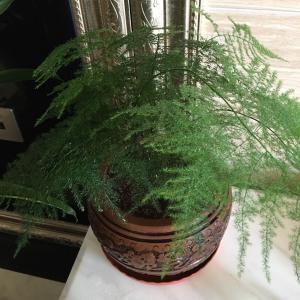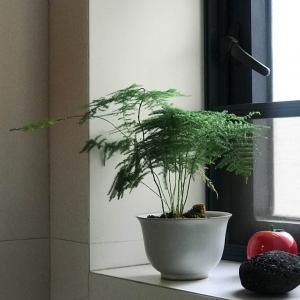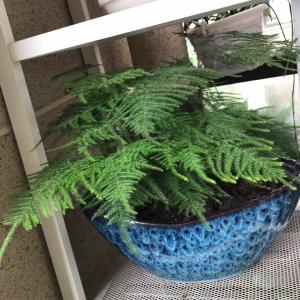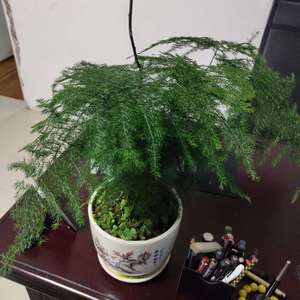Posts (312)
气泡布鲁鲁
2024-09-03

1. Regularly Wash Your Hair
Regular hair washing keeps your scalp and hair clean and clear of excess oil and dirt. However, the ideal frequency will differ depending on your hair type and preferences. If your hair is extremely dry, limit your washing to twice a week. If you have an oily scalp, washing your hair every other day will help.2. Use Shampoos Free of Chemicals
The environmental factors that damage your hair are completely beyond your control, but you can choose which shampoos to use. Your hair will be healthier if your shampoo contains fewer chemicals. Choose gentle shampoos that go with your hair type. In shampoos, sulphates and parabens are used to lather and preserve hair, respectively. However, these ingredients may cause skin irritation and increase the risk of hormone disturbances over time.3. Deep Conditioning
Even though you condition your hair after each wash, deep conditioning is still the best option. Every now and again, shampoo your hair, squeeze out the excess water, and towel dry it. Next, apply conditioner directly to the hair's root using generous amounts. Use a comb with wide teeth to ensure the conditioner is distributed evenly throughout your hair. Rinse thoroughly after leaving the conditioner for 10 minutes to an hour and enjoy silky smooth hair.4. Dry Your Hair Naturally
We are aware that your hair become as gorgeous as that of your on-screen idol after blow drying. But using too much heat when styling your hair can harm the scalp. However, styling your hair with too much heat might damage the scalp. If you still need to style, keep it for special occasions only. Using a towel or the air to dry off after washing is the best option. Never comb wet hair or sleep with it in. The cuticle of your hair can be damaged by vigorous towel rubbing. Be kind.5. Properly Oil Your Hair
Pre-shampoo therapies that include massaging and oiling the scalp increase blood flow, calm your muscles, enhance shine, and nourish the hair. Additionally, it promotes hair development, replenishes moisture, and repairs split ends. Castor oil, olive oil, almond oil, and coconut oil are among the options available to you. Avoid using mineral oil on your hair.6. Hair Masks Made at Home
Some may even be good enough to eat, but the majority smell really bad! However, the beautiful thing is that your pantry likely contains all of the items. 1. Mustard oil, egg, and curd-The solution to all of your issues are right here if you have dry hair that looks like hay. Vitamins A, B12, D, and E, fatty acids, and protein are all abundant in eggs. The fatty acids make it a natural hair conditioner, the B12 helps build volume, and the protein helps strengthen the roots. 2. Avocado with peppermint oil-Also known as the butter pear, avocados are creamy, rich, and the only fruit that combines the protein of meat, the fat of butter, the vitamins, and the minerals of green vegetables, in addition to having a nutty flavour. Apply this treatment to your hair by mashing some avocado, adding a few drops of peppermint oil, and mixing well. Wash it off after 15 to 20 minutes. 3. Olive oil, coconut oil, and egg-This is the best mask for quick hair development. Apply two eggs, two tablespoons of olive oil, and two tablespoons of warm coconut oil after letting the mixture cool. You can therefore say goodbye to poor hair days by using chemical-free products designed for your particular hair type, eating healthily, avoiding heat styling, and following all the above advice! The most important thing is to see a doctor if you have severe hair loss and damage despite having a healthy hair care routine.
Article
气泡布鲁鲁
2024-09-03

How to Store Apples Properly
Apples, like other pome fruits such as pears and quince, should be stored in a cool, dry, shady location, according to Wortz. Scheck continues, "the optimal location to keep apples will depend on your particular climatic circumstances (such as how warm or humid it is in your house), how long you want to preserve the apples, and where and how you store other veggies." Apples, for example, may stay up to ten months in a low-temperature root cellar.Refrigerator vs. Countertop
Wortz and Scheck agree that the crisper drawer of your refrigerator is an excellent spot to keep apples if you want to extend their shelf life. "They may be preserved in the refrigerator for six to eight weeks," explains Wortz. Scheck adds that if your room temperature is on the warm side, the refrigerator is good for keeping apples even for shorter periods of time. Even if you don't refrigerate them, they may still survive one to two weeks on the counter.Keep Them Apart From Other Fruits
"Apples emit the gaseous hormone ethylene, which causes other fruits and vegetables to mature quicker, particularly if the apples themselves are injured or overripe," adds Scheck. "If you don't want to stimulate ripening of other fruit, put apples in a plastic tub or bag in the fridge, or in their own produce drawer." If they're on the counter, she recommends storing them in their own dish, apart from other fruits, or in a paper bag.One Bad Apple...
"Be cautious to remove flaws or eat apples with bruises and blemishes promptly, since they can encourage the other apples to decay," Scheck advises. "If you are keeping multiple apples together, it is important to continuously monitoring them since one poor apple can also harm the rest," says Wortz.How Long Do Apples Last?
"Store-bought apples have already been kept and have spent time in transit," explains Wortz. "They may be stored in cold storage for months after being plucked. However, once purchased, they will survive one week out of the refrigerator and six to eight weeks in the refrigerator." Scheck recommends putting apples in the fridge as soon as they are chopped. To avoid browning, "wrap them firmly in plastic or beeswax wrap and eat within a few days," she advises. "Or put some lemon juice on them."Preventing Food Waste
"Use your blemished or damaged apples right immediately (removing and discarding the bruised sections, of course)," advises Scheck. "If you can't consume the apples right away, convert them into applesauce or compote to use later as a pie or turnover filling, or juice them and preserve the juice for another day. Just utilize them!"
Article
气泡布鲁鲁
2024-09-03

If you're doing the remodeling on your own...
If your renovation ideas are minor, or if they are primarily cosmetic (think painting, tiling, or flooring), you may do them yourself. If this is the case, Farkash advises that you should base your strategy on how comfortable you are with living beside a construction site. He recommends breaking the job down into chunks, deciding on a starting point that works for you, and then working your way through nearby or adjoined spaces—all while resisting the need to bounce around to various locations, which may extend your remodeling effort. "It's also a good idea to start with your top priority," he adds, which for most homeowners is the kitchen. "This way, if you run out of money or energy, you've completed the most essential task." This makes deciding on a beginning point very personal—but in the end, this strategy will make you the happy. Still unsure? Farkash recommends starting with the repairs in your first-priority room and then moving on to the aesthetic upgrades after they are finished. Consider the following alternative: Get the most difficult jobs completed first. "Start with the messiest things first since it will produce a visible improvement, which feels like a pleasant result," he adds, which will eventually drive you to keep going.If you're going to hire a professional...
If the remodel is more significant and needs the assistance of a professional, your order will usually be prescribed by professionals who must come in and manage them. For example, in most circumstances, plumbing and electrical work must be completed together. Farkash believes that if your staff asks for your choice, you can't go wrong with an inside-out method. "Start from the inside (consider mechanical elements in the walls and floors) and work your way out," he advises. One of the advantages of employing a professional team for bigger, multi-trade projects is that they will know where to begin—and where to proceed from there. "In the long term, these professionals can complete these renovations quicker, so you don't have to live in a remodeling workplace for any longer than necessary," Farkash explains.Whatever you do, don't make a bad decision.
Working in the wrong order might have severe consequences (which is another reason why hiring a professional team is so critical). Farkash warns that needing to perform repairs may result in you squandering time and money (especially if your mistakes involve paint or flooring stain). Furthermore, larger disasters may need the services of a professional. "Working in a systematic approach will save you time and money, and you will complete the job quicker with cleaner, better outcomes," he says.
Article
气泡布鲁鲁
2024-09-03

1. Listen to Uplifting Music
We all like music. It both inspires and entertains us. Even sorrowful music may let us appreciate the entire gamut of our emotions. But listening to the same thing over and over again is certain to have an impact on us. Pay attention to the words of the songs you're listening to on repeat. Are they motivating? Is the music's pace energizing? Find a few upbeat songs from any genre and add them to your playlist. Use Pandora or Spotify to locate similar tracks. Allow them to serve as the soundtrack to your newfound optimism.2. Make a Sunshine Folder
This might be either a real folder on your desk or a file on your computer's desktop. Fill it with items that make you happy. Photos of family, closest friends, treasured moments, gorgeous artwork, or inspirational quotations that inspire you. Return to the folder anytime you see yourself dragging. This is your own beautiful universe; it reflects everything positive in your life and who you aspire to be.3. Practice Positive Self-Speak
According to research professor Brené Brown, we should "talk to ourselves as we would someone we love." You would never say harsh things about yourself to a loved one, so why is it OK to say them to yourself? You would never keep someone around who was continually putting you down. You want support and comfort from your buddies. You must also be a friend to yourself. Give yourself some leeway. When you're struggling, remind yourself, "I'm learning." When you glance in the mirror, tell yourself, "I look terrific today." When you don't know anything, say to yourself, "I'll look it up." If you repeat anything enough times, you will begin to believe it. Choose to repeat good things.4. Surround Yourself with Positive Individuals
It's difficult to be cheerful in the presence of naysayers and bullies. If the people around you are continually pointing out defects and issues in the world, you will feel the same way. It's difficult enough to keep oneself upbeat without having people bring you down. Look for friends who are already optimistic and healthy. Encourage one another and develop healthy habits together.5. Spread Your Happiness
According to a Chinese saying, "if you desire happiness for a lifetime, assist someone else." Have you ever realized how satisfying it is to make someone laugh? Or to get a firmly squeezed embrace when you offer someone a thankful gift? Bringing pleasure into the lives of others is one of the most effective methods to produce happiness on your own. Tell them they are lovely. Pay for someone else's coffee. When you grab someone's attention on the street, smile. You never know how much that compassion will be appreciated. And, perhaps, they will pay it forward.6. "Does This Matter?"
It's easy to get caught up in the minutiae of each day. Getting cut off in traffic, getting into a heated dispute, and spoiling your favorite clothing. Sometimes all of these things seem to occur on the same day, and you are confident that it is the worst day of our life. But how many of these factors are really important in the long run? You'll ultimately forget about the vehicle and the quarrel, and you'll discover a new favorite garment. When you find yourself lingering on the negative aspects of the day, try to remember all of the great aspects as well. They're there; don't overlook them because a handful of little misfortunes have left you in a bad mood.7. Take a deep breath and pause
Positivity is a decision made every minute of every day, and with the correct resolution, it can become a natural response. The skill of "pausing" is the last tactic to try. Pause and consider the facts before reacting to any circumstance. Don't let your emotions get the best of you. If being upset, shouting, or storming away from the situation does not seem to be constructive, take a deep breath and consider how you want to behave. Then just do it.Instill Positive Thinking, But Watch Out for Toxic Positivity
Positive thinking is effective and may change your perspective and life, but it is not a panacea. Positive thinking may not be able to influence some aspects of your life, mind, or body. Simply "thinking positive" isn't always the greatest option. When positivity is exploited as a panacea for all problems, it may become poisonous. In certain circumstances, more than a good attitude is required. Major life upheavals, bereavement, painful events, and severe sadness are just a few examples of things that are unlikely to be remedied by a "positive vibes only" attitude. If you need more assistance than a cheerful attitude, seek it out. Make contact with a buddy. Contact a helpline. Alternatively, make an appointment with an expert who can assist you. Therapy and counseling may assist you in overcoming obstacles and laying the groundwork for your positive thinking to show through. (With virtual treatment alternatives, you can even obtain help from the comfort of your own home.) You don't have to be enslaved by negative thinking. If you need assistance, ask for it. Download our free booklet, which contains 75 recommendations for living a happier, healthier life, for additional ideas on how to welcome more positivity into your existence.
Article
气泡布鲁鲁
2024-09-03

Hydrate right after washing
According to Austin, Texas-based aesthetician Renée Rouleau, one of the most common skincare blunders is waiting too long after washing to apply moisturizer. "You only have a limited window after cleaning to put on a hydrating product before moisture begins to evaporate," explains Rouleau, whether it's face or body lotion. "If you let your skin to fully dry, the water on your skin, as well as any moisture in your skin, will begin to be drawn into the air." Ellen Marmur, MD, a board-certified dermatologist in New York City, also suggests speeding up in the shower. "Long showers deplete your body's natural oils. That's why some individuals have an itching place on their back all the time."Think about your water
"Soft water does not effectively dissolve soap, so it might leave a film on your skin," explains Susan H. Weinkle, an assistant clinical professor of dermatology at the University of South Florida. Use face and body cleansers sparingly if your water is soft (no more than a nickel- or quarter-size amount, respectively). Hard water, on the other hand, makes it difficult for washes to lather, requiring you to use more cleanser, which may create dryness. Gentle, non-soap compositions that aren't designed to lather may help to reduce this, according to Carolyn Jacob, MD, a board-certified dermatologist in Chicago, Ill. Log on to the Environmental Protection Agency's website to verify the water quality in your region.Maintain a healthy level of stress
It has an effect on almost every aspect of your body, including your skin. Researchers at Stanford University discovered that students who felt worried at test time had more severe acne outbreaks than those who were less stressed. According to Lisa Donofrio, an associate clinical professor of dermatology at Yale University School of Medicine, stress raises the body's production of hormones such as cortisol, which may make skin oilier and reduce its capacity to fight off acne-causing bacteria. Regularly practice stress-management strategies such as yoga, deep breathing, and meditation to keep that frayed sensation under control. Donofrio claims that this "may assist disorders such as acne, psoriasis, rosacea, and seborrhea."Early and frequent exercise is recommended
"The skin's primary purpose is to control heat, so when you exercise, the blood vessels in the skin widen to bring warm blood to the surface, enabling heat to be transmitted out of the body and into the air. This gives you a flushed appearance "Dr. Marmur starts each day with 30 minutes of jogging, cycling, or basketball. Increasing blood flow also guarantees that your skin receives the oxygen and nutrients it needs to be healthy. "Your body's final priority is your skin. Because the blood flows first to the brain and key organs, having blood packed with nutrients rushing all the way to your skin first thing in the morning ensures that your day begins off healthily "Dr. Marmur explainsRethink your skincare regime
Don't let your skincare go on autopilot, advises Dr. Marmur, who prefers to gather a conscious assortment of products before adjusting day by day. "I use a milder night cream if my skin looks well and feels comfortable," she explains. When the temperature lowers in October and my skin gets drier, I opt for a richer product." Similarly, some ladies expressed their love for masks, which aid in the treatment of transitory ailments such as sensitivity and dryness. "When I have my morning coffee, I apply an exfoliating clay mask followed by a moisturizing mask," Jessica Alba, creator of Honest Beauty, adds. Bonafide Beauty Lab's founder, Pamela Baxter.Indoor solar exposure should be monitored
Yes, you read it correctly: UV radiation (particularly UVA rays) may enter your home and workplace windows, causing wrinkling and brown patches. The same is true for automobile windows: Because the left half of the face and upper body is more exposed while driving, studies have indicated a greater prevalence of skin cancer on that side. Aside from cancer, "many individuals have more wrinkles and sun damage on the left side of their faces," Donofrio observes. Make sun protection a no-brainer by always using an SPF moisturizer.Take care of your skin from the inside out
"To maintain my face clean and firm, I consume collagen building blocks like copper, found in nuts and seeds, and lysine, found in legumes and lean meats," says Dr. Marmur, who adds that zinc and magnesium-rich foods also assist with acne. "I've seen overwhelming anecdotal evidence in my practice and in my own skin," says Dr. Marmur, despite the lack of mountains of scientific papers confirming that a balanced diet equals great skin. Whitney Bowe, MD, a board-certified dermatologist in New York City, concurs; one glow-boosting tip she does when her skin seems sallow is to increase her beta-carotene intake by blending carrots or sweet potatoes. Finally, and you've probably heard this before: The majority of professionals polled agreed that drinking water is essential. Josie Maran, a model and the inventor of Josie Maran Cosmetics, uses flavoring to fool herself into drinking more. "I create infused waters with fruits, vegetables, and herbs," she explains. "I like to flavor water with sliced strawberries and basil." And what should you avoid? Dairy. Scientists aren't sure why milk products might cause acne, but some believe the natural hormones found in dairy may be to blame, according to Leslie Baumann, MD, a board-certified dermatologist in Miami Beach, Fla., who adds that even organic milk can trigger outbreaks. Acne has also been related to cottage cheese, quick breakfast drinks, and sherbet. While cutting less on dairy will not fix a pimple issue on its own, doctors believe it may help people who suffer from severe outbreaks. (If you go this way, make sure you're receiving enough calcium from other foods, such as leafy greens, or take a supplement.)Select water-based hair products
Some conditioners, pomades, volumizers, and styling creams include oils or waxes that may clog pores and cause acne, particularly on the brow, back and hairline. Even if you take care not to get them on your skin, they may run down your face and body when you wash or sweat, or be transferred by your pillowcase while you sleep. Instead, seek solutions that are water-based and avoid ones that include mineral oil, beeswax, or microcrystalline wax. Consider SEEN Haircare, a series of shampoos, conditioners, and styling aids designed to help reduce breakouts.Examine your medical cabinet
Some oral contraceptives, antibiotics, fertility treatments, and antiseizure medications, according to Jerome Litt, MD, a board-certified dermatologist in Beachwood, Ohio, may cause breakouts. Dry skin may be caused by antihistamines, diuretics, and certain antidepressants. Furthermore, many medicines, diuretics, and diabetic therapies might make you more susceptible to UV damage. "Talk to your doctor if you see your skin responding more while taking a certain medicine," Dr. Litt advises. "He or she may be able to reduce your dose or switch you to a different drug."Have a nice night's sleep
"The skin heals itself at night," explains Dr. Bowe, "therefore the more sleep you receive, the more time your complexion has to regenerate." And the advantages are not just long-term. In many circumstances, you may view the findings the next morning. "The more sleep I get, the less makeup I require," Alba explains, "since my face looks naturally renewed." The inverse is also true. "An increase in cortisol levels may create under-eye puffiness," explains Dr. Bowe. "Beauty sleep is no laughing matter—you really need seven to eight hours. When you don't get enough sleep, your cortisol levels rise, which increases the pace of collagen breakdown, resulting in under-eye bags." "Yawning and squinting may also tear down collagen and elastin around the eyes," Dr. Bowe adds.
Article
气泡布鲁鲁
2024-09-03

Shirts And Trousers That Are Lightweight And Long-sleeved
When spending time outside, it is critical to protect as much of your skin as possible. Avoid textiles with a loose or open weave, such as lace, while shopping for apparel. Furthermore, dark hues provide better protection than bright colors. A long-sleeved denim garment, for example, has an SPF of around 1,700, whereas a white t-shirt has an SPF of about 7. Furthermore, if you're going to the beach or pool, remember that dry clothing provides greater sun protection than damp clothes. Choose clothes with an ultraviolet protection factor (UPF) number on the label for better sun protection.UV-protective Sunglasses
Sunglasses are an essential component of your sun-protective outfit. When shopping for sunglasses, seek for lenses that provide UV protection. Lenses that seem dark may not provide UV protection, so check the label before buying. Furthermore, large-framed or wraparound sunglasses provide better sun protection than aviators, for example, so keep this in mind when choosing your sunglasses.A Broad-brimmed Hat
A hat is an easy and efficient method to keep your face and neck covered. When choosing a hat, look for one with a broad brim to protect your ears, as well as your head and neck. Baseball caps and straw hats with holes are not as good at keeping you warm outside.Footwear That Covers Your Feet
However, if you're going barefoot or wearing sandals or flip-flops, be sure to apply sunscreen to all exposed skin. A broad-spectrum, water-resistant sunscreen with an SPF of 30 or higher should be applied to all exposed skin in addition to wearing sun-protective apparel. Contact a board-certified dermatologist if you have any concerns about how to protect your skin from the sun and avoid skin cancer.
Article
气泡布鲁鲁
2024-09-03

Dish and Song
According to Shelleylyn Brandler, the creator of TaDa! Catering, there are two approaches to the dishes after your dinner. "Before dessert, ask your guests to assist with the dishes. My visitors usually offer, so I don't have to ask. We also have a dishwasher to make things simpler "she explains, adding that she finds methods to make this duty enjoyable. "I like doing sing-alongs and doing the dishes to songs that everyone knows. It's also known as 'dirty dishes and dance' or'song and dish.'"Allow Time to Pass
Do you feel awkward asking your guests to contribute in? If this is the case, Brandler advises storing your dirty dishes and waiting for a better moment to eat them. "Remove any crumbs from the plates and place them on the counter. Cover them with kitchen towels until you're ready to begin cleaning them "She advises that if you take this way, you should still soak your silverware. "However, I like to finish all the dishes before dessert so that I don't have to worry about it the following day."Order is Important
If you, like Brandler, prefer to handle the load sooner rather than later, she suggests utilizing her tried-and-true strategy for dealing with a big number of dishes. "My dishwashing routine has always been to soak silverware first, then wash dishes, glasses, then pots and pans," she explains. "In addition, I soap everything on one side of the sink before stacking and rinsing on the other. If you don't have a dishwasher, you'll need a huge dish rack."Disposables Shouldn't Be Knocked Down
You don't have to choose between disposable and porcelain plates. Brandler recommends mixing and matching instead. "There's no shame in using excellent plastic cups and disposable pans for turkey, stuffing, and yams to lighten the burden," she adds, emphasizing the need of choosing high-quality, visually attractive, and recyclable solutions.
Article
气泡布鲁鲁
2024-09-03

Hair Loss in General
According to Dr. McMichael, the typical number of strands you can anticipate to lose each day is determined on the thickness and length of your hair. However, if you're searching for a range, she says it's usual to lose 50 to 100 hairs every day. According to World Trichology Society board-certified trichologist David Kingsley, FWTS, there is a variability in this hard-and-firm quantity according to the duration of each person's hair development phase. As a result, he advises against getting too caught up in the numbers: Hair loss in this so-called ordinary range might still be deemed excessive if it is unusual for you. "For example, if you count your hair over a few weeks and observe that roughly 90 hairs fall out on average, you could believe that this is OK since it falls well within the 'normal' range," he continues. "If you were only losing 45 hairs per day [at one time], 90 is more than double your typical rate. This might indicate that you are experiencing significant hair loss." What is the takeaway? Compare your own hair loss to your own history, not someone else's, advises Kingsley.What's in Your Brush?
There are a few times when we notice the most hair losing, the first being when we brush our hair. According to Kingsley, the more often you brush (and wash) your hair, the less strands you should see come out each time. So, if you lose 45 strands a day on average but brush every day, you should observe a lesser, consistent number in the bristles; the majority of normal shedding occurs in the shower. If you brush your hair just a few times a week, you should anticipate an increase in hair losing since strands collect from not being combed every day. In the end, how much you see in your brush is determined by your everyday behaviors.In the Bathtub
The second area we observe hair losing is after shampooing in the shower. What constitutes a typical quantity is determined on the amount of hair you have to begin with. According to Dr. McMichael, people with shorter and thinner hair shed less than those with thick, long hair. The amount of hair you lose after washing it varies. The less you shampoo, the more hair you'll shed when you do, according to Kingsley, who claims that 75 to 80% of the hair you lose throughout the day is washed away when you shower. Dr. McMichael believes that recording a pattern of hair loss that deviates from your baseline, rather than a numerical quantity, is a stronger sign of a problem.In Your Hands
Again, this is based on the individual. According to Dr. McMichael, it's normal for a person to lose five to eight strands of hair while running their hands through their hair—but there are other elements to consider, such as hair type and texture, products, and stress levels. "Everyone is different," she explains. The usual quantity of hair you lose each day should not vary quickly, and it's critical to distinguish between brushing your hands through your hair and yanking on your strands, according to Kingsley. The latter does not precisely indicate whether your hair loss is typical or cause for concern, and Kingsley warns against using it as a barometer because of its addictive nature. "If a person pulls on his or her hair and does not see any hair the first time," he explains, "he or she will repeat the activity four or five times until hair falls out." "It's almost as though people want constant verification that their hair is thinning."When Should You See a Doctor?
Bald patches and patchiness, according to Dr. McMichael, are evident signals that your hair loss or shedding is abnormal; losing huge clumps of hair and having scalp symptoms such as irritation and discomfort may also be reason for worry. Remember that hair loss is not confined to your scalp: same symptoms may also apply to your brows, lashes, and face—or anyplace else on your body that typically has hair. According to Kingsley, excessive hair losing that lasts more than 2 to 4 weeks warrants medical care. And, if your ponytail has become thinner or you can wrap a band around it more times than before (provided the band is not stretched out), get treatment—this might be another indicator of irregular hair loss. Whatever you do, all experts recommend consulting with your doctor first. "Every kind of hair loss is distinct, and therapy is dependent on the type of hair loss the person is experiencing," explains Dr. McMichael. "Healthcare experts make treatment recommendations based on a variety of criteria, including the volume and location of hair loss. To make treatment choices, patients should always consult with their doctor."
Article
气泡布鲁鲁
2024-09-03

1.Vitamin C
Let's begin with the most well-known: Because of its ability to reduce hyperpigmentation, brighten skin tone, decrease moisture loss, help reduce skin inflammation, and fight UV damage, vitamin C is capital-B beloved by the beauty community—you'd be hard-pressed to find an expert who doesn't recommend adding a vitamin C serum to your daily lineup. "Vitamin C is one of the few active compounds that may help all skin types," said board-certified dermatologist Elizabeth Tanzi, M.D., assistant professor of dermatology at George Washington University Medical Center. You can even take vitamin C orally if you want to double up on skin-brightening properties; in fact, dual board-certified dermatologist Keira Barr, M.D., recommends both supplementing with vitamin C and applying it topically for optimal skin health—this ensures that there is enough vitamin C biologically available and active in and on the skin, she told mbg. Furthermore, there is much data associating vitamin C consumption to general skin health3. Consider it an additional boost to help hyperpigmentation erase quicker. If you want to attempt this one-two punch, check out our recommended vitamin C pills.2. Kojic Acid
Kojic acid is a byproduct of fungal fermentation that is commonly praised for its skin-brightening properties—studies even suggest it may successfully brighten skin and erase dark spots. "It works its magic by inhibiting tyrosinase, an enzyme that is necessary in the UV-induced activation of pigment-producing cells in the skin," previously said board-certified dermatologist Rebecca Marcus, M.D. Furthermore, since kojic acid only targets excess pigment, there is no risk of excessive whitening or irritation, according to Marcus. Of course, kojic acid may still cause irritation (particularly in those with sensitive skin), but it's normally well tolerated. You may learn more about the dark spot fighter by clicking here.3. Mandelic Acid
Finally, there is the wonderful mandelic acid. If you're not aware of this AHA, have a look: This exfoliant accelerates cell turnover and gently removes dead, highly pigmented skin, allowing even individuals with sensitive skin to join the party. (In fact, dermatologists claim it's one of the most bearable acids for sensitive skin.) Furthermore, "Mandelic acid has a special affinity for oil compared to other AHAs," according to board-certified dermatologist Cynthia Bailey, M.D., creator of Dr. Bailey Skin Care. "It has been demonstrated to minimize [excess] sebum production and excessive shine by penetrating deeper into oily pores." Even better, when combined with vitamin C, the advantages multiply: A mandelic acid and vitamin C skin care program was related with a 73% improvement in the look of post-inflammatory hyperpigmentation and melasma.
Article
气泡布鲁鲁
2024-09-03

What Exactly Is Green Tea?
Camellia sinensis is the plant that produces tea leaves. Tea leaves may make green, black, white, or oolong tea depending on the processing procedure. Green tea is manufactured from fresh tea leaves that are dried and exposed to sunshine to avoid oxidation and fermentation, which gives green tea its characteristic taste. Various processing processes may be used for different varieties of green tea. Matcha green tea, for example, is made from pre-harvest tea leaves that have been exposed to 90% shade, resulting in a deeper taste and increased antioxidant content. Green teas are widely renowned for their antioxidant content. The majority of the antioxidants in green tea are derived from flavonols, namely catechins. Epigallocatechin gallate (EGCG), the most abundant and strong catechin in green tea, has been associated to a lower risk of heart disease and some forms of cancer. Green tea and its extracts are being utilized for different reasons, such as reducing hair loss and enhancing hair health, due to its high antioxidant content.Green Tea Hair Benefits
For its alleged advantages, green tea is incorporated to many hair care products. Here are some possible green tea hair advantages.Hair loss may be avoided
Many men and women worldwide suffer from hair loss, which may be caused by a variety of factors such as stress, nutrition, autoimmune illnesses, and hormonal changes. Androgenetic alopecia, or hormonal hair loss, affects about 50 million men and 30 million women in the United States. In fact, 50% of men and 25% of women over 50 will have some level of hormone-related hair loss. The normal growth cycle of the hair varies after hair loss. The cycle is divided into three stages: androgen (hair growth), catagen (transitional phase), and telogen (rest) (hair loss). Two hormones, testosterone and dihydrotestosterone, have been linked to a reduction in hair growth and an increase in hair loss. According to some studies, EGCG may suppress the effects of these hormones on hair and decrease hair loss. Ten volunteers with androgenetic alopecia used Forti5 for 24 weeks in a company-funded pilot research. 80% of subjects reported substantial improvements in hair regrowth at the conclusion of the research. The supplement did, however, include an unknown quantity of green tea extract, melatonin, vitamin D, omega-3, omega-6, beta-sitosterol, and soy isoflavones. As a result, it's impossible to say if the green tea extract was responsible for these gains. In one research, mice that got a topical application of EGCG-rich green tea lost much less hair than those who did not. EGCG seems to reduce testosterone-induced hair loss by extending the androgen phase of hair development and decreasing the telogen phase, which results in hair shedding.Promotes Hair Growth
Green tea may aid in hair growth and regeneration. In one tiny trial, researchers applied a topical green tea-derived EGCG extract to the scalps of three alopecia patients. The subjects' hair growth activity increased significantly after 4 days. EGCG seems to promote hair development by activating hair follicles and reducing skin and hair cell damage. Furthermore, in a mouse hair loss study, researchers discovered that 33% of the animals who drank green tea extract saw hair regrowth after 6 months, whereas no mice in the control group improved. However, it is still uncertain how quickly or effectively green tea hair treatments promote hair growth in individuals, particularly those without hormone-related hair loss.Enhanced Nutrition Delivery
Hair is a component of the integumentary system, which comprises nails, skin, hair, and accessory structures. In truth, your hair grows straight from your skin, where it obtains blood flow and nourishment while growing. Researchers discovered that taking supplements containing green tea extract for 12 weeks enhanced cutaneous blood flow and oxygen delivery by 29% when compared to the control group in a short trial of 15 subjects. 30 individuals in the same trial consumed 4 cups (1 liter) of green tea for 12 weeks in another group. The green tea group improved skin moisture much more than the control group. The transport of oxygen and nutrients to the skin is closely tied to hair development. Hair loss may be caused by inadequate blood circulation. As a result, drinking green tea may boost hair development by increasing the flow of these nutrients to your scalp.How to Use Green Tea on Hair
Because of the growth-promoting characteristics of green tea and green tea extract, they are often used as a key component in hair products. They are available online and at most retail outlets. Here are a few methods for using green tea on your hair: 1. Shampoo: Use a green tea extract shampoo on a regular basis. Apply the majority of the shampoo on your roots and scalp and gently scrub. Conditioner. Apply a green tea conditioner or hair mask to the roots, shafts, and tips of your hair. Leave on for 3-10 minutes, or until the manufacturer's recommendations are followed. 2. Conditioner: Hair rinse prepared from scratch. Allow 1-2 green tea bags to soak in boiling water for 5 minutes. When the liquid has cooled, apply it to your hair at the conclusion of your shower. 3. Homemade hair rinse: You may also attempt to consume 1-2 cups (240-480 ml) of green tea every day to feed your body with antioxidants.A Word Of Warning
Although some study suggests that drinking green tea and using green tea hair products might help with hair development, there are a few factors to bear in mind.Toxicity
While green tea is safe to drink, many green tea supplements and oils contain substantially greater levels of EGCG, which may cause major problems such as liver damage and stomach distress. According to a recent study, the safe daily dose of EGCG in supplements and brewed tea is 338 mg and 704 mg, respectively. As a result, be wary of supplements that contain much greater amounts. Also, before beginning a new supplement, consult with your healthcare physician. Most individuals may comfortably consume up to 3-4 cups (710-950 ml) of green tea each day.How to Make Use of the Products
Green tea hair products are omnipresent, and their cost-effectiveness is dependent on how you use them. Hair follicles get blood flow and nourishment to encourage hair strand development. When a hair strand (shaft) grows out of a hair follicle, it no longer obtains nutrition. As a result, consuming green tea will have no effect on the strength of your existing hair. It will only effect newly formed hair in the hair follicle. While certain hair treatments hydrate and feed hair strands, they do not stimulate them to grow. If you use a hair mask or shampoo, be sure to apply it to your roots and scalp to allow the substance to reach your hair follicles. Also, while using shampoo, carefully exfoliate your hair to prevent hurting the roots.In Conclusion
Green tea is an antioxidant-rich beverage that is popular all over the globe. Its consumption and use in hair products may reduce the risk of hair loss and perhaps boost hair regeneration. Many green tea hair products are available in shops or online, but for optimal effects, apply them to the scalp and roots. After washing and conditioning your hair, you may rinse it with brewed green tea. If you prefer to drink green tea, you may safely have up to 3-4 cups (710-950 ml) each day.
Article
Related Users
Elite Article


























